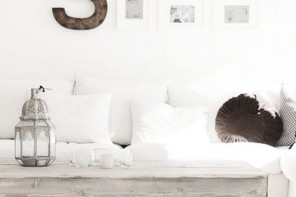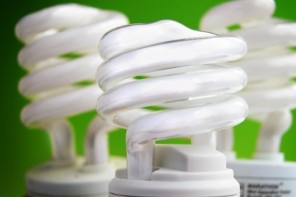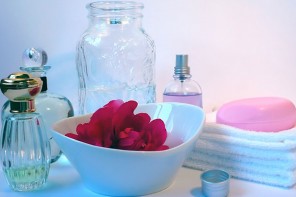Written by: Giulia Simolo
As the man of the house there are certain things that often wind up being your responsibility, such as garden or home improvements. Here are some tips to make your work easier and more eco-friendly.
Rethink garbage
The next time you have to take out the garbage, think about whether any of it could be used in new way. Try to use items you throw out into the trash to create new things that could prove useful around the house or when you are working on some DIY projects. For instance, use old newspapers as floor linings when you paint, or use old wire hangars as soldering iron rests by folding them into “M” shapes.
Another great use for some garbage items is to throw them into a compost heap. Making your own compost provides the soil with nutrients and is much better for the environment than harmful chemical fertilisers. It is said that over half of what you throw away in household waste could be useful for compost. Some things include fruit and vegetable scraps, lawn and garden weeds, newspapers and shredded paper.
Here’s how to start a compost heap:
What you’ll need:
Panels of wood
Nails and a hammer
A garden fork
Green garden waste (such as grass clippings)
Brown garden waste (dry leaves and soil)
Pile up some leaves and grass clippings in a heap in the garden. Choose a spot that’s close to the kitchen so you can regularly add more waste to the pile. Enclose the heap with old pieces of wood but ensure you leave one side open for access to add more compost material. Also do not cover the top. Two basic ingredients for compost are green debris and brown debris, so ensure you put one part green debris for two parts brown, until the mix is damp. Place a layer of leaves in the bottom of your heap (about 10cm in thickness) and about 2cm of good quality garden soil. Add about 5cm of grass clippings then brown and green waste in alternate layers. A week later, turn the compost with a garden fork and start adding household items such as kitchen waste to the heap. Turn it weekly and you will have compost in about two months.
The grass is greener
If you spend a lot of time using a noisy lawnmower that’s filled with noxious petrol, try to switch it for a human-powered lawnmower instead. This is a great way to get some exercise while you do the mowing and it’s better for the environment, too.
Another alternative that will cut down your chore time and is also better for the planet is to get an artificial lawn. This is a manmade surface that is manufactured from nylon and polypropylene (an eco-friendly alternative to nylon and polyester). Artificial lawn might not sound too green in the eco-friendly sense, but it turns out to be in the long term because it is easier to maintain as opposed to natural grass. Added to this, gardens that aren’t built to be water-wise can result in a lot of water requirements, so an artificial lawn can be a great way to save water.
Make your pool eco-friendly
You regularly clean your pool so that it is clean and safe for your children and pets, but do you ever think about all the chemicals that are in the water? There are products on the market that enable you to ensure you cut out the chemicals while still keep your pool in great condition. POOLCLEAR eliminates the need for chlorine and algaecides. It doesn’t have the high toxicity that is contained in chlorine. Safe for the environment, after being used in your swimming pool the water can be backwashed into the lawn or flowerbeds without causing any harm to growth of the garden. For more info, visit www.reliance.co.za
Green gardens
There’s more green to your garden than the grass. If you want to inject some new life into your garden, plant some indigenous plants. These thrive in the areas in which they are naturally found. This means that you won’t need to use a lot of water to keep them healthy if you live in a dry area, for instance. Indigenous plants are also great because they support the animal life that occurs in the area.
Floor it!
The best flooring materials are those that are made from natural linoleum such as cork. Cork is great because its bark regenerates, it doesn’t have toxins and it provides great insulation for the home. Another good idea is bamboo because it is harvested from a growing plant and is extremely sustainable. Visit Floors Online and Union Tiles for these green flooring options.
Brush green
You might not realise it but there are toxins in your paint. One can of paint can contain carcinogens and mutagens that are responsible for illnesses such as nausea, tiredness and headaches, and can contribute to more serious diseases such as cancer. Choose paints that are low in Volatile Organic Compounds.
It’s also a good idea to avoid products that release formaldehyde, a colourless gas that can cause coughing, burning and watering eyes, as well as breathing problems. DIY products that usually contain formaldehyde include plywood, particle board and other pressed wood products.
These small changes to your home and garden will make them look good and drastically improve your green lifestyle, too.
The liveeco team









